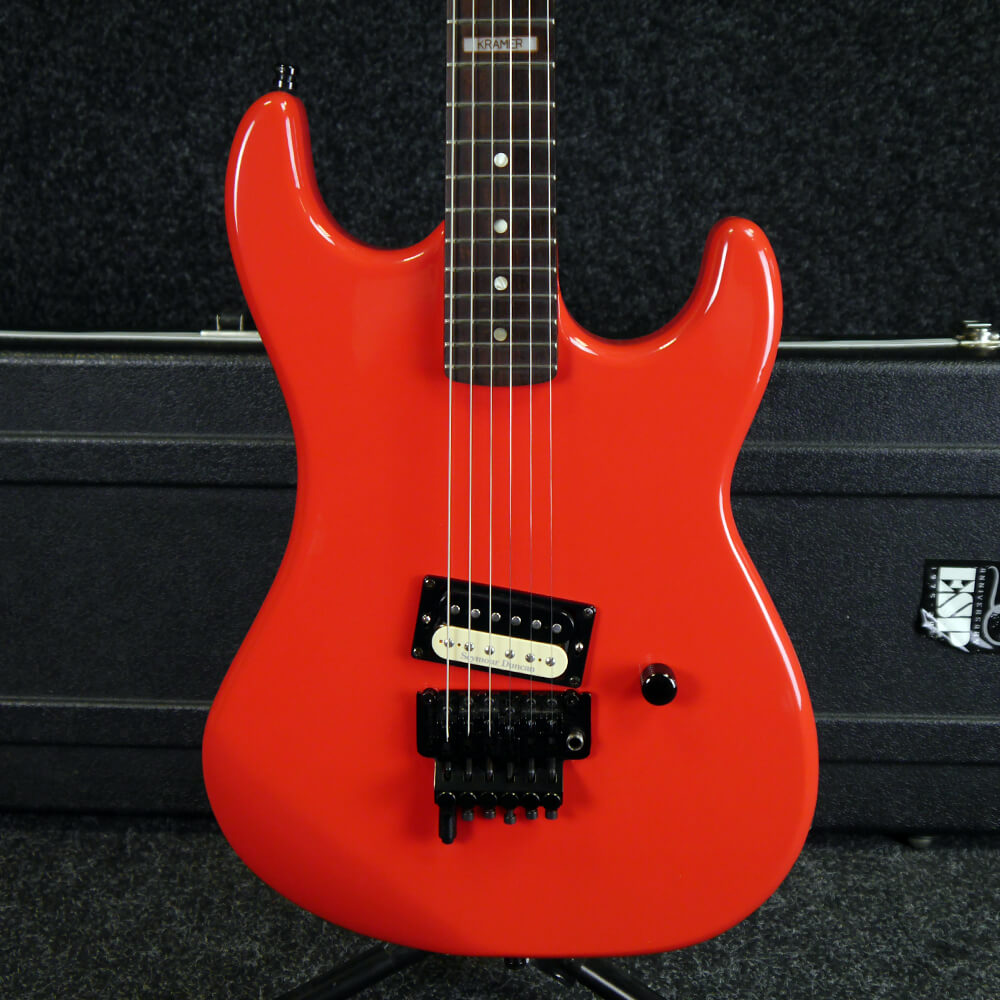

Kramer's "alumi-neck" line lasted roughly until 1982.

The hardware was top-notch as well: Schaller tuning keys and bridges Schaller and DiMarzio pickups custom-made strap pins aluminum cavity covers. The bodies were made of fancy woods such as curly or Birdseye maple, walnut, and koa. The inserts, set in epoxy, were usually walnut or maple. Instead, Kramer opted for wooden inserts in the aluminum necks. Unlike Travis Bean, Kramer went beyond the idea of a neck forged entirely out of aluminum, due to both its weight and its feel. Introduced in 1976, early models featured the trademark "pitchfork" aluminum-reinforced necks with a fret board made of ebonol-material similar to one used in bowling ball production. Used exotic woods and hybrid wood/aluminum necks until 1982.Trademark pitchfork aluminum-reinforced necks - "Alumi-necks"

Transition from Aluminum to Wooden Necks 1976-1981


 0 kommentar(er)
0 kommentar(er)
